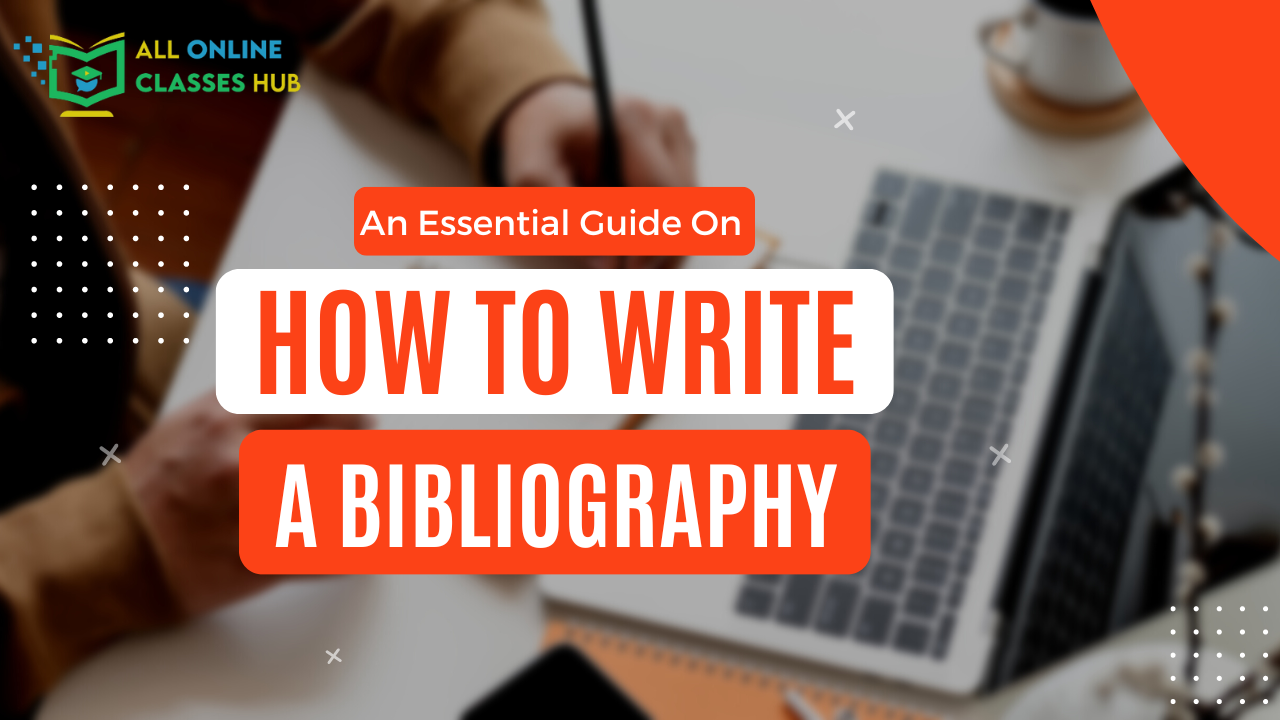
An Essential Guide On How To Write A Bibliography
A bibliography is a comprehensive list of the books, journals, periodicals, or internet resources that an author utilize to conduct research for and write their work. It is crucial to remember that it must be a comprehensive list that includes all of the sources utilized for the study, not simply those cited in the text in any writing style. In a bibliography, the following information is required:
- The author’s or authors’ name
- The whole name of the source material
- The publisher’s name
- The publishing dates
- The source document’s page number
Types of Bibliographies
There are three popular types of bibliographies which are as follows:
- Analytical bibliography
- Enumerative bibliography
- Annotated bibliography
Analytical bibliography:
Analytical bibliographies contain details on the booksellers and printers, descriptions of the paper and binding, and any discoveries made during the process of turning a manuscript into a published book. This can be further divided into a textual bibliography that compares the already published work to the author’s original manuscript, a descriptive bibliography that deals with the physical appearance and nature of a book, and a historical bibliography that demonstrates the context of the book’s production.
Annotated bibliography:
Bibliographies with annotations list the author’s works in alphabetical order. This style of the bibliography includes a list of the author’s completed projects. In addition to adding notes about the sources, comments on and summaries of the sources, assessments of the sources whereby the value of the sources is assessed, and reflections on the sources which offer a perspective on the value of the text with regard to the research question, they also provide an outline of the type of research that was done on a given chapter.
Enumerative bibliography:
Enumerative bibliographies are frequently used by students conducting research papers. The author provides all the references here while taking into account certain arrangements. An author can begin with the subject and then list the dates after that. They have something in common, such as language, subject matter, or historical era. The writer then provides information about the source in order to point readers in the direction of the source. A card catalogue is an illustration of such a bibliography.
Importance of bibliography
- Give readers the opportunity to learn more
The list of references is available for readers to utilize when they further research a topic and deepen their comprehension. Readers may, in fact, swiftly and readily locate the references for the works they want to examine.
- Attest to the excellence of your writing
The quality of the writing will be assessed by the teacher or grader of a report, thesis, or other writing assignment depending on the validity of the sources for online classes hub. The bibliography highlights your research and gives your work more authority. Plagiarism doesn’t tolerate, and copyright respects.
- Respect for copyright must be shown
Has anybody else thought about or studied your work before? You should acknowledge the writers who first came up with these ideas. Academic honesty is still important. Instead of faking that they came up with the ideas on their own, the grader enjoys it when the writer identifies their sources. Truthfulness also entails no risk in contrast to plagiarism.
Guidelines to write a bibliography
Some of the guidelines to write a bibliography are as follows:
- Keep Record
If you keep a record of each book, encyclopedia, or article you use as you read and make notes, it will be simpler for you to create your final bibliography. Keep track of the materials you use as you go, and provide a separate bibliographer of your paper with the heading Bibliography. Find and save references to books, magazines, and papers that could include information and suggestions on your topic. Review and quickly inspect the actual objects. Then pick the pieces that offer various viewpoints on your subject.
- Sequence
Concisely outline the main point and range of the book or article in your annotation. Place things in alphabetical order by author, or title if there is no author, underline the main title, and make sure to punctuate properly as in the samples.
- Make a list of sources
Start a preliminary or draught bibliography by making a list of all your sources on a separate piece of paper. For each source, make a note of the whole title, author, publishing location, publisher, and publication date. Pages are denoted by pp and are denoted by p. Additionally, the source of every fact that is written on a note card should acknowledge in the upper right corner. (Note that the shorter version of The XYZ Book, Volume 7, Page 55 on the sample note card is WB, 7, p.55.) Furthermore, you may use the data on your note cards to check your bibliography once you’ve completed writing your essay.
- Bibliography for a website
In the case of writing a bibliography for a website, include the URL and date you visited instead of the author’s name, book volume, and the page number.
- Verify originality
Verify your source of knowledge, show the variety of sources you consulted, and check important sites you may refer to later, verify originality and credit other people’s work.
Bibliography Example:
- Corado, Fin. 2008 Environmental Studies. viewed July 13, 2015, http://www.medafie.com/studies/environmentalstudies/biblio.html
- 2010, 7 Keys to Successful Life Encyclopedia. 2010, Encyclopedia Inc., Chicago. Vol.5. p. 481.
- Conol, Mac. 2011, Remote Learning Time Magazine. 20 Oct, pp. 87-92. ‘Literature for people’, World Magazine. Viewed 8 Jan 2012, http://www.worldmagazine.com
- Madison, H.K. 2010, Everything I know about the education system. Robert A Jeff, Book Bank 2008. (Vol: 2, p. 53)
- ‘Origins of the Universe: fact and myth’, Charles Darwin. Viewed Mar 22, 2015, http://www.charlesdarwin.com/universe/factandmyths.html